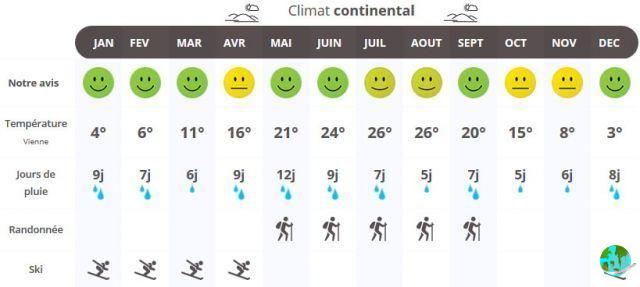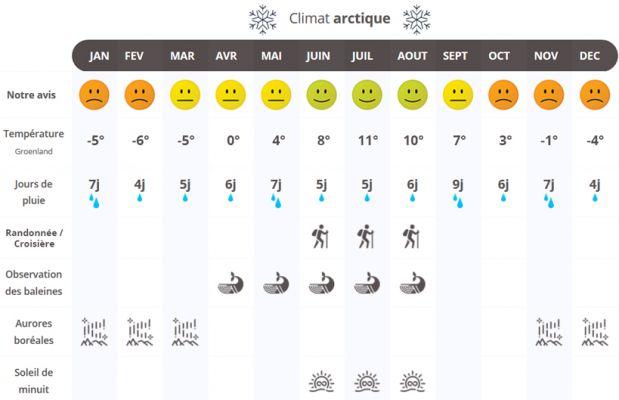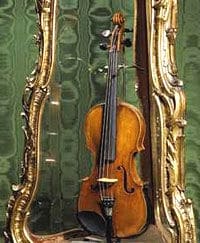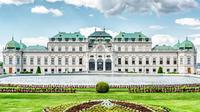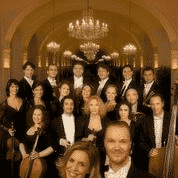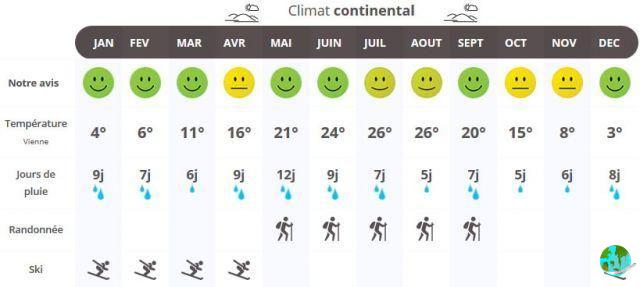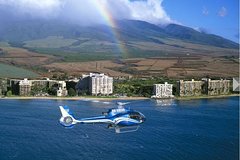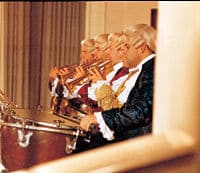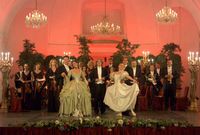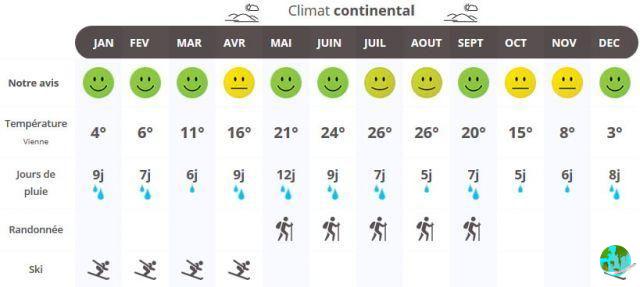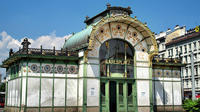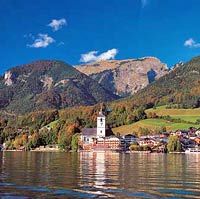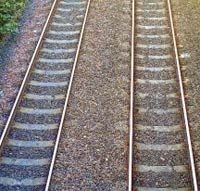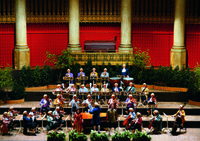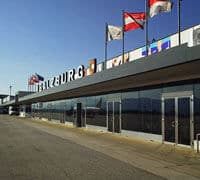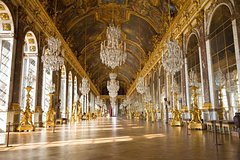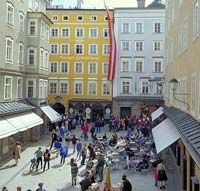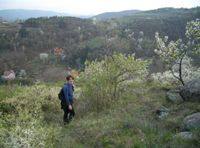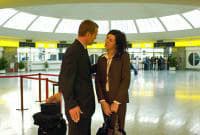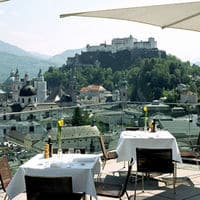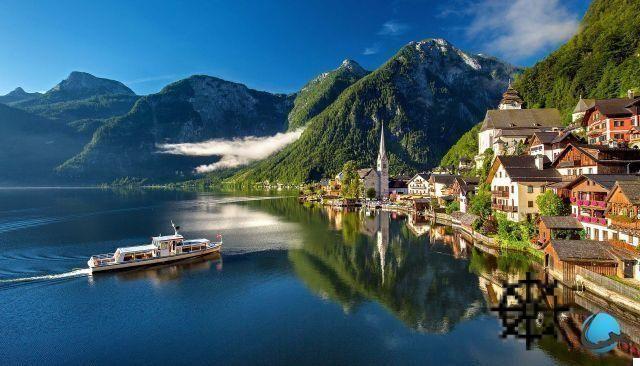
Occupying a strategic position at the heart of Europe, Austria has long played a major role in the history of the European continent. From this rich past, it retains a remarkable monumental heritage which gives it a cultural image well anchored in its veins. As for nature, you will not be left out. Fatherland of skiing par excellence, the Austrian mountains reveal unsuspected charms in fine weather. The many lakes and national parks that dot the territory bear witness to a exceptional nature, conducive to letting go and rejuvenation. Here are our tips for visiting Austria and helping you prepare for your stay in this beautiful Central European country!
Why travel to Austria?
To travel through Austria is to take a leap of faith between culture and nature ...
Culture side, dazzling buildings worthy of the most beautiful fairy tales stand alongside picturesque, romantic and colorful villages. History buffs soak up themonumental atmosphere that reigns in the heart of the capital of the Austro-Hungarian Empire. Graz and its Renaissance buildings transport you to the era of the renewal of literature and the arts. Salzburg takes you in the footsteps of the famous Mozart. Contemporary art lovers will not be disappointed with an alternative walk to discover magnificent works of Street Art in Vienna.
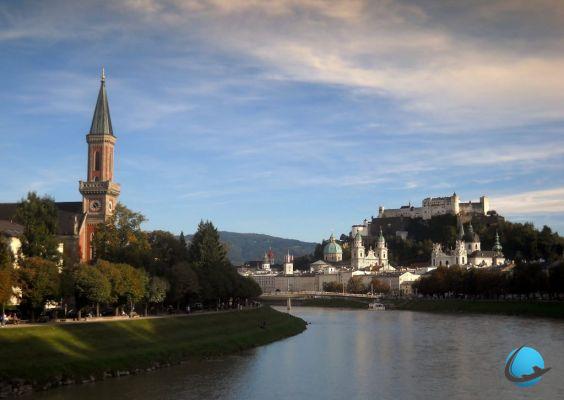 Salzburg
Salzburg
As for nature, Austria is ideal for a total disconnection. Its mountainous terrain allows you to find yourself alone in the world facing grandiose landscapes, summer and winter. Visitors are also always amazed at the vastness of Austria's forests. The many lakes and natural parks which punctuate the four corners of the territory, make it possible to always find a little corner of paradise to practice a sporting activity or quite simply to be amazed.
In short, visiting Austria is the symphony of colors of small villages, the freshness of the Tyrolean mountains, the effervescence of the architectural gems of Vienna or the softness of the wooded hills. That's why you have to visit Austria.
When is the best time to visit Austria?
Austria is a destination that can welcome you all year round. But certain periods are more favorable depending on your travel goals. To visit Austria as a whole, nothing better than spring and autumn. These seasons are perfect for a road trip combining both culture and nature. Tourist pressure is less than in summer and you will better enjoy the various sites. Accommodation prices, especially in large cities, are also more advantageous.
For a purely cultural getaway, especially in Vienna, you have to choose the atmosphere you want. In summer, the continental climate of the capital can reach 35 ° C, while winters can be harsh. The less contrasting seasons of autumn and spring are very attractive, but they are not for all that less expensive in the cultural metropolises of Vienna, Salzburg or Graz. Of course, Austria would be nothing without its mountains. The country is mainly known for winter sports, but summer is also fantastic in the Alps, by lakes or in nature parks.
What budget to plan on site?
Austria has a standard of living roughly equivalent to that of France. On the same terms, visiting Austria does not cost more than a holiday in France.. The difference is essentially in relation to the mode of transport. Accommodation is the highest budget item. For accommodation in a mid-range hotel (2 to 3 stars), prices generally range from 70 to 100 € per night in a double room. In large cities, count up to 120 €.
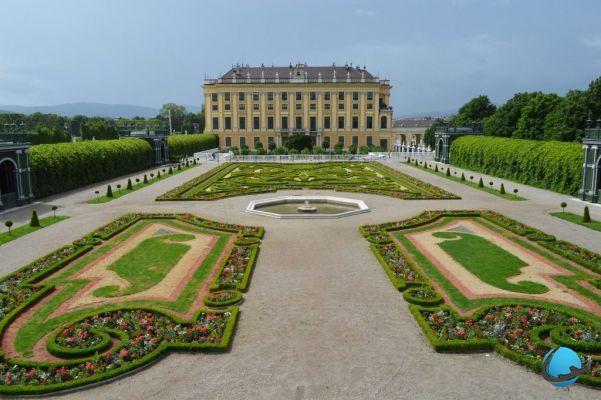 Schönbrunn Palace in Vienna
Schönbrunn Palace in Vienna
In terms of catering, the main courses are often very generous, it is quite possible to take only one main course and one drink. The budget can thus be limited to around 15 €. Some cafeterias or snacks even offer packages from € 9. The budget for admissions to cultural sites can quickly be consequent and it is therefore not to be neglected. Count from 5 to 20 € depending on the site. To conclude, a one-week stay that combines intermediate quality accommodation both in the big cities and outside, costs on average 100 € per day and per person, excluding transport. If you are only staying in town, you have to count more.
How to get to Austria from France?
By plane
The plane remains the fastest means of transport to get to Austria. You reach Vienna from Paris in 2 hours compared to around 13 hours by car. Vienna is the main airport, but it is possible to land in Graz, Salzburg or Innsbruck. Also consider looking at flights to Bratislava. Indeed, the Slovak capital is less than an hour's drive from Vienna and flight prices can be interesting.
By train
If you like long-distance travel, traveling by train from France to visit Austria can have its charm. For a Vienna-Paris trip, you need a day's travel with one or two changes.
By car
Driving from France can be a great alternative if you don't live too far from the border and are considering a long roaming stay. Depending on your point of departure, you pass through Germany or pass through Switzerland or Italy.
Most bus
For a cheap stay, consider looking for regular bus lines. The prices can be confusing!
How to get around the country?
By metro, tram and city bus
If you stay in the capital, getting around is easy. Vienna is covered by a dense network of metro, bus and tram. The other main towns are also equipped with efficient tramway and urban bus networks.
By train
To move between the various cultural metropolises of the country, the train remains the best solution. The rail network is very well developed and the trains are comfortable. However, so you don't end up with a hefty transport bill at the end of your stay, check what discounts you can qualify for.
By car
To take the toll motorways, you must first pay for a sticker. You can get it at gas stations near the border or at tolltickets.com. The Austrian road network is also very well maintained and pleasant.
By bike
Austrians are great cyclists. You can rent bicycles (including electric) to get around the cities. For the more athletic, the legendary Eurovélo 6 route which crosses Europe passes through Austria. It crosses the country following the route of the Danube. A great way to visit Austria while discovering wild landscapes!
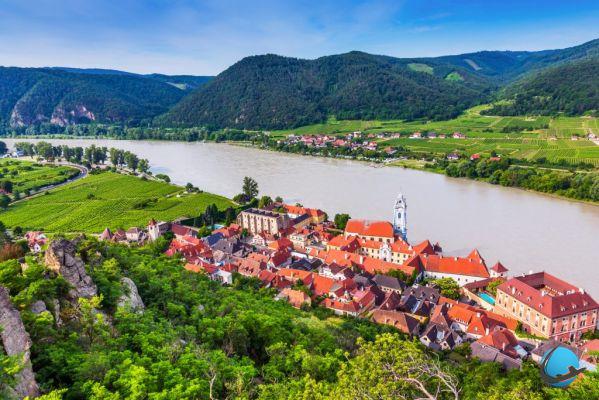 Along the Danube in Austria
Along the Danube in Austria
What to eat and drink in Austria?
Austrian gastronomy presents a mixture of all the flavors of Central Europe. It consists mainly of potatoes, bacon, flour or cream. The least we can say is that it sticks to the body, especially since it is often served generously:
- THEViennese schnitzel (Wiener Schnitzel) the specialties ball begins. It is served with lingonberry jam and accompanied by traditional potatoes.
- Le Backhendl is an iconic dish from Styria. It is fried chicken topped with pumpkin seed oil.
- For a quick and inexpensive lunch, nothing beats the traditional ones Semmel. These filled rolls, accompanied by a dessert, make a perfect snack.
- You will also find everywhere dumplings, called Knödel, salty or sweet. They can be eaten on the go at a snack bar or with popular dishes.
- For desserts, don't leave without tasting the Apple struddel or Chocolate Sacher Torte.
- To accompany the meal, the local red and white wines have a very good reputation.
- Don't leave without tasting a real Viennese coffee either. The coffee tradition in Austria is very marked, to such an extent that it is included in the list of intangible goods of Unesco.
Where in the country to stay?
Where you stay depends on what you want to see and the ambiance you are looking for. For a cheap and friendly stay, but sometimes a bit rustic, you can opt for a accommodation at the farm, an agritourism formula that is developing more and more. If you want to be quiet in small, welcoming structures, look for rooms with locals (Privatzimmer) or guesthouses. The guest rooms are located in the countryside, but it is quite possible to find small pensions in town. These two solutions have the advantage of having a reasonable cost (50 to 80 €).
For a higher standard, Austrian hotels are very good value for money. Most of the time, these are family structures, unlike impersonal chain hotels. If you are traveling as a family, get closer to the JUFA network which particularly targets an audience with children. Halfway between the youth hostel and the hotel, the formula is particularly suitable for a family stay.
If you are going to Austria to ski, Tyrol is the region with the largest number of ski areas (nearly 80). For more family-friendly resorts, go to the east of the country instead. Finally, for a stay to discover the great cultural sites, nothing better than a traveling trip between Salzburg, Linz, Vienna and Graz. Each stage takes from 1 hour 30 minutes to 3 hours of driving and you can opt for accommodation outside the cities. Innsbruck is further away from this route, but if you have the time you can integrate the Tyrolean capital here.
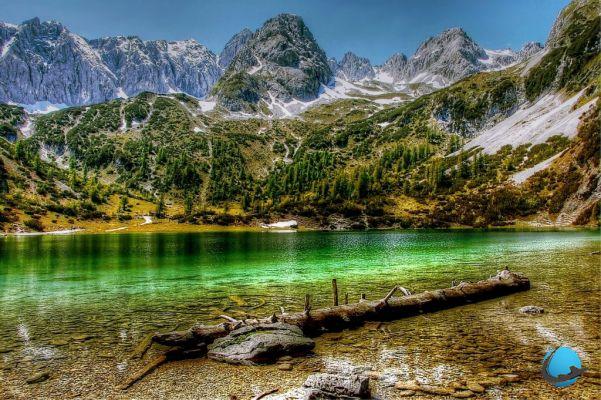 Tyrol
Tyrol
What are the main monuments and museums to see?
Before visiting Austria, prepare to step back in time as you discover princess castles and magnificent Baroque buildings.
- In Vienna, the must-see for imperial visits is the Schönbrunn Castle. The “Austrian Versailles”, residence of Sissi the Empress, has no less than 1 rooms! To deepen the history of the Habsburgs, the Hofburg Palace is a must.
- Salzburg and its abundant cultural program appeal to classical music lovers. Mozart's native city sometimes looks like an Italian city. Do not miss the fortress of Hohensalzburg, the birthplace of Mozart or the Mirabell Castle and its garden.
- Between Vienna and Linz, Melk Abbey is one of the most beautiful buildings of the Austrian Baroque.
- The historic center of Graz is one of the most remarkable Renaissance ensembles in Central Europe. Don't miss the clock tower at the top of Schlossberg hill.
- As for Innsbruck, nestled in the heart of the Alps, it surprises as much as it appeases, with its medieval heritage surrounded by mountains. Not to be missed: the little golden roof, the imperial palace or even the Ambas castle.
Enter this selection with our article: The 15 essential visits to do in Austria!
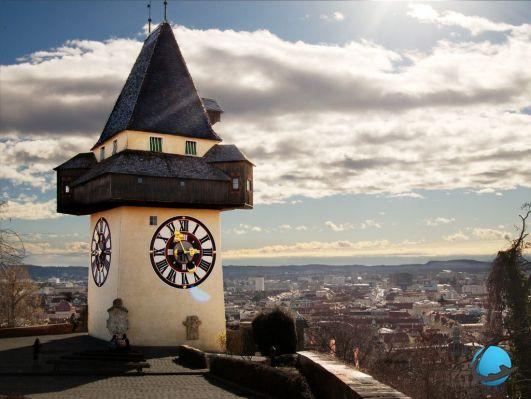 The Clock Tower in Graz
The Clock Tower in Graz
What are the most beautiful walks to do?
In Austria, nature is offered to all corners of the country. In a space barely larger than a French region, six national parks occupy the territory. This is to say the natural wealth of Austria! If during your stay you had to choose only two of these magnificent preserved spaces, choose the national park of Hohe Tauern and that of Kalkapen.
The first stretches between Tyrol, Carinthia and the region of Salzburg. It is absolutely necessary to do the walk that leads to the most beautiful waterfalls in Europe : the falls of Krimml. High-mountain enthusiasts will have a blast among the hundred peaks which rise to over three thousand meters. Kalkapen National Park is home to theone of the most beautiful forests in the country, which is also the last wild forest in Austria. It is full of torrents, mountain pastures and unique animal species. A walk in total immersion in nature consists of taking the Kalkapen trail.
Austrian lakes also have pride of place in the landscape. The Achensee in Tyrol is a real inland sea where it is possible to practice many water sports. The Wolfgangsee, between Salzburg and Upper Austria, is certainly one of the most beautiful in the country. Visiting Austria and not admiring a sunset over one of its lakes is probably missing one of the most romantic postcards in the country!
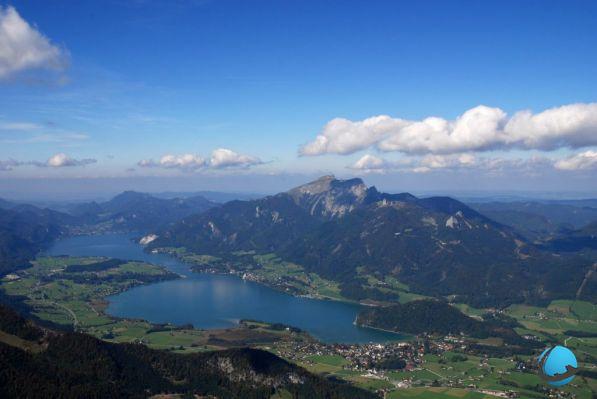 Wolfgangsee
Wolfgangsee
Useful information
Here are some practical details to help you prepare for your stay.
- formalities : a valid identity card or passport is sufficient.
- Health : no particular formality is recommended or to be completed. However, remember to get the European health insurance card.
- Currency : the country is part of the European Union. The euro is therefore in force.
- Language : the official language is German.
- tourist Office : Use the Austrian Tourist Office website to plan your stay.
So, are you ready to experience Austrian nature?
Do you plan to travel to Austria in the coming months? Let us know your wishes and tips in the comments!




